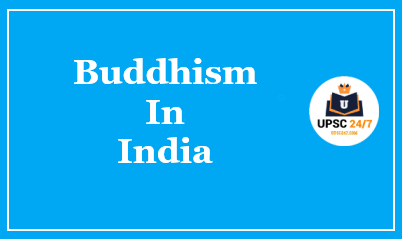Kanjeevaram Silk Saree : Tamil Nadu | UPSC | Topic Based MCQ | Why In The News ?
News : National award winning artisan weaver, B Krishnamoorthy, has created a repository with samples of all the designs, patterns and motifs traditional to Kanjeevaram silk sari weaving, preserving fine pieces for next generation.
About Kanjeevaram Sarees:
- The Kanjeevaram is a sari that is usually handwoven in mulberry silk and has pure gold or silver zari that renders it a festive quality.
- Originating from the village ‘Kanchipuram’ in Tamil Nadu, Kanjeevaram.
- Kanjeevaram Saree is considered the queen of silk sarees.
- It traces its long and rich history from the Chola Dynasty
Kanjeevaram Sarees Design Inspiration :
- The temple architecture of south India and especially around Kanchipuram has historically served as a mood board for design inspiration for the traditional Kanjeevaram motifs.
- One can spot motifs such as the mythical creature called the Yali (an elephant-lion fusion), the Ganda Berunda (a two-headed majestic mythical bird) and the ubiquitous temple border called reku.
Dholavira UNESCO World Heritage Site | UPSC | Quiz & Ans
GI TAG For Kanjeevaram Sarees :
- Kanchipuram silk has also received GI Tag in 2005-06.

About Silk Production in India
- India is the second largest producer of silk in the world, producing around 18% of the world’s total silk.
- South India is the leading silk producing area of the country and is also known for its famous silk weaving enclaves like Mysore, Kancheepuram, Dharmavaram, Arni, etc.
- The Government of India in 2017 launched a scheme called “Silk Samagra” for the development of sericulture in the country.
There are five major types of silk of commercial importance, obtained from different species of silkworms. These are
- Mulberry
- Oak Tasar
- Tropical Tasar
- Muga
- Eri.
What Is Vanya Silks ?
Except mulberry, other non-mulberry varieties of silks are wild silks, known as vanya silks.
Key facts:
- India is the 2nd largest producer of silk in the world after China.
- It is largest consumer of silk in the world.
- It is the only country in the world that produces all 5 varieties of silk on a commercial scale– Mulberry, Oak Tasar & Tropical Tasar, Muga and Eri.
- Holds the global monopoly for production of the famed golden ‘Muga’ silk.
Central Silk Board:
- The Central Silk Board is a statutory body established in 1948 by an Act of Parliament.
- It functions under the administrative control of the Ministry of Textiles, Government of India.
About Silk Samagra Scheme :
- It is a Central Sector Scheme launched for a period of three years i.e 2017-2020.
- Silk Samagra is an Integrated Scheme for Development of Silk Industry
- which was launched to sustain and strengthen the Sericulture activities in the country.
Implementation:
- It is being implemented by the Central Silk Board (CSB).
Components of the scheme :
- Research & Development, Training, Transfer of Technology and I.T. Initiatives
- Seed Organizations
- Coordination and Market Development and
- Quality Certification Systems (QCS) / Export Brand Promotion and Technology Upgradation.
Aim:
- To scale up production of Silk by improving the quality and productivity
- To empower downtrodden, poor & backward families through various activities of sericulture in the country.
Other GI tagged Sarees In India :
| Kerala |
|
| Telangana |
|
| Madhya Pradesh |
|
| Odisha |
|
| West Bengal |
|
| Maharashtra |
|
| Chhattisgarh |
|
| Gujarat |
|
| Tamil Nadu |
|
| Uttar Pradesh |
|
| Karnataka |
|
| Andhra Pradesh |
|
Source – The Hindu, Indian Express







